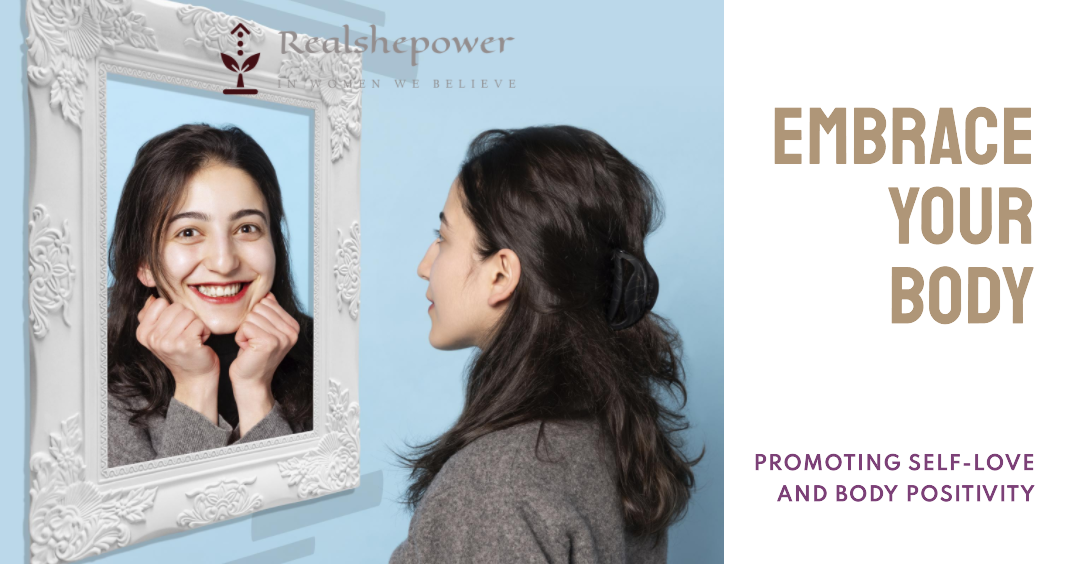How Society’s ‘Ideal’ Shapes Our Self-Worth & How to Reclaim It


In today’s world, one can’t escape the constant stream of “ideal” beauty standards. Whether it’s a billboard featuring a chiseled model or a social media influencer promoting the “perfect” body, these images can deeply influence our self-perception. Let’s dive deep into understanding how body image interacts with self-esteem and how societal standards play a pivotal role in shaping our self-worth.
Table of Contents
Understanding Body Image
At its core, body image refers to how individuals perceive, think, and feel about their bodies, regardless of how their appearance might align with reality. This self-perception can range from positive to negative and can fluctuate over time, often influenced by factors like age, societal trends, personal experiences, and peer feedback.
The Role of Societal Standards
From a historical perspective, beauty standards have always been in flux. Renaissance art celebrated curvy women, the Roaring Twenties idolized the slender flapper, while today, society often places value on a mix of lean yet curvaceous physiques for women and muscular, athletic bodies for men. These standards, often unattainable for many, are perpetuated by media, fashion, and now, more than ever, by social media platforms.
A significant concern is the advent of digital alterations, filters, and photo-editing tools, which further distort reality and perpetuate impossible standards. A study by Common Sense Media found that 35% of teens felt concerned about posting perfect images of themselves online.
Impact on Self-Esteem
Self-esteem is an individual’s holistic sense of self-worth. When there’s a disconnect between one’s perceived body image and the societal “ideal,” it can lead to feelings of inadequacy, impacting self-esteem negatively.
The National Association for Self-Esteem reported that media portrayal of the ‘perfect’ body can lead to a negative body image, directly impacting self-worth. The Association also noted that one’s perception of body image could predict overall life satisfaction more than any other factor.
Repercussions of Negative Body Image
A negative perception of one’s body, often stemming from a misalignment with societal standards, can have profound consequences on an individual’s mental, emotional, and physical health. This distortion affects more than just the individual’s view in the mirror; it extends to their daily life, interpersonal relationships, and overall well-being. Here’s a deeper exploration of the ramifications:
1. Mental Health Consequences:
- Depression and Anxiety: Constant dissatisfaction with one’s appearance can contribute to feelings of sadness, hopelessness, and excessive worry. Over time, these feelings can develop into clinical depression or anxiety disorders.
- Low Self-Worth: A continuous feeling of inadequacy due to perceived bodily flaws can lead to a crippling sense of low self-worth, affecting an individual’s confidence in both personal and professional domains.
- Obsessive Behaviors: Some individuals become overly preoccupied with perceived flaws, leading to obsessive behaviors such as constantly checking mirrors or seeking reassurance.
2. Physical Health Repercussions:
- Eating Disorders: Negative body image is a significant precursor to developing disorders like anorexia nervosa, bulimia, and binge-eating disorder. These conditions can have life-threatening consequences, affecting cardiovascular health, bone density, and more.
- Over-Exercising: While exercise is beneficial, doing it excessively to meet a certain body standard can lead to physical injuries, exhaustion, and other health issues.
- Unhealthy Dieting: Resorting to fad diets, skipping meals, or taking unregulated supplements can deplete essential nutrients, leading to health concerns like weakened immunity, hair loss, and more.
3. Social and Interpersonal Impact:
- Isolation: Due to fear of judgment, individuals with a negative body image may withdraw from social situations, leading to feelings of loneliness and further worsening their mental health.
- Relationship Strains: Insecurities about one’s body can cause strains in romantic relationships due to perceived inadequacy or excessive need for validation.
- Diminished Performance: Academic or work performance can suffer as individuals might avoid participating, presenting, or engaging due to their body image concerns.
4. Societal Impact:
- Stereotyping and Biases: Societies that perpetuate a narrow definition of beauty can inadvertently encourage stereotyping, leading to prejudices based on body size or type.
- Economic Consequences: The beauty and diet industry, capitalizing on individuals’ insecurities, can lead to excessive spending on cosmetic surgeries, diets, and more, often with questionable results.
5. Long-Term Effects:
- Chronic Health Issues: Extended periods of unhealthy eating or excessive dieting can lead to chronic health issues like diabetes, heart diseases, and osteoporosis.
- Lifelong Struggles: If not addressed, negative body image can persist throughout one’s life, affecting various life stages, from adolescence to old age, and influencing decisions, relationships, and overall life quality.
In understanding these repercussions, it becomes evident that fostering a positive body image and challenging societal beauty norms is not just a matter of personal well-being but a broader societal concern that warrants attention and action.
Empowering a Positive Body Image
In a world saturated with often unattainable beauty standards, fostering a positive body image can feel like an uphill battle. Yet, with conscious effort, a positive body image isn’t just attainable; it’s sustainable. Here’s a deep dive into creating and nurturing a more loving and accepting relationship with our bodies:
1. Media Literacy and Critical Consumption:
- Awareness: Understand that images in media, especially advertisements and celebrity photos, often undergo digital enhancement and retouching. By being aware, we reduce the power of these images to define ‘normal’ for us.
- Conscious Consumption: Limit exposure to media that promotes only one body type or uses body shaming in its content. Surrounding oneself with body-positive content can recalibrate our perceptions.
2. Positive Self-talk and Affirmations:
- Mirror Exercise: Stand in front of a mirror and, rather than zooming in on perceived flaws, focus on parts of your body you love. Over time, this practice can transform your relationship with your reflection.
- Affirmations: Use positive statements that reinforce self-worth and body appreciation. Phrases like “I am more than my appearance,” or “My body is a vessel of strength and capability,” can be powerful.
3. Broaden the Definition of Beauty:
- Diverse Exposure: Engage with diverse representations of beauty. Whether it’s through art, global media, or in-person interactions, broaden your understanding of beauty.
- Internal Beauty: Focus on internal qualities like kindness, resilience, passion, and empathy. Recognizing beauty in others beyond physical attributes can translate to a broader self-perception.
4. Seek Support and Open Conversations:
- Body Positivity Groups: Join or create support groups, whether online or offline, where individuals share their journeys and uplift one another.
- Family and Friends: Engage loved ones in conversations about body image, helping to break down societal constructs and build collective resilience against them.
5. Professional Guidance:
- Therapy: Consider therapy sessions, particularly with therapists specializing in body image or self-esteem issues. They can provide tools and strategies to build a healthier self-image.
- Educational Workshops: Attend workshops or seminars that focus on body positivity, self-worth, and self-esteem. Education can be a powerful tool against ingrained negative perceptions.
6. Celebrate Your Body’s Abilities:
- Physical Activity: Engage in physical activities you enjoy, not as punishment or just to alter your body, but to celebrate its capabilities. Whether it’s dancing, hiking, yoga, or any other activity, let it be a celebration of movement and strength.
- Gratitude Journaling: Maintain a journal focused on gratitude towards your body. Document the incredible things your body allows you to experience, from the simplicity of a walk in the park to achieving fitness milestones.
7. Cultivate Mindfulness and Presence:
- Mindful Meditation: Through meditation, become more attuned to your body’s needs, sensations, and the space it occupies in the world. This awareness can transform your relationship with your body from one of critique to one of appreciation.
- Yoga: Beyond fitness, yoga fosters a deep connection between mind and body. It can be an avenue to appreciate your body’s flexibility, strength, and presence.
Incorporating these strategies, while rejecting societal pressures, can lead to a more holistic and positive perception of oneself. This journey, like all personal growth journeys, takes time, patience, and consistent effort. Remember that each step forward is a victory, no matter how small.
FAQs
1. Does negative body image affect both genders?
Yes, while historically more associated with women, men also face pressures, often emphasizing muscularity and athleticism.
2. How can parents help their children develop a positive body image?
Parents can be role models by portraying a healthy relationship with their bodies, avoiding negative body talk, and encouraging their children to appreciate their bodies for their abilities, not just appearance.
3. Are there societal benefits to promoting a more inclusive body image?
Absolutely! Inclusive body positivity can lead to reduced discrimination, improved mental health across communities, and can foster acceptance and understanding.
4. Is body positivity the same as promoting unhealthy lifestyles?
No. Body positivity is about accepting and loving all body types. It encourages a healthy relationship with one’s body, which can lead to healthier lifestyle choices.
5. How do social media platforms influence body image?
With the rise of influencer culture, users are bombarded with ‘ideal’ body images, leading many to feel inadequate if they don’t match up. Filters and editing tools further perpetuate unrealistic standards. However, there are also growing body positivity movements on these platforms that challenge these norms.
6. What role do celebrities play in shaping body image?
Celebrities often set fashion and beauty trends. While many perpetuate the ‘ideal’ standards, a rising number openly discuss body challenges and promote acceptance, positively impacting societal views.
7. How can someone help a friend struggling with body image issues?
Listening without judgment, avoiding negative body talk, encouraging professional help if needed, and promoting activities that boost self-worth are some ways to support.
8. What are some resources for those seeking help with body image issues?
Organizations like the National Eating Disorders Association (NEDA) or Body Dysmorphic Disorder Foundation offer resources and support for those struggling with body image concerns.
Conclusion
The relationship between body image, societal standards, and self-esteem is intricate and deeply personal. While societal pressures may not vanish overnight, individuals can empower themselves to foster a healthier body image, positively impacting their self-worth. In an age where digital perfection is often flaunted, it’s essential to remember that true beauty emanates from authenticity, kindness, passion, and the myriad qualities that make us uniquely human.
You can now write for RealShePower and be a part of the community. Share your stories and opinions with us here.
